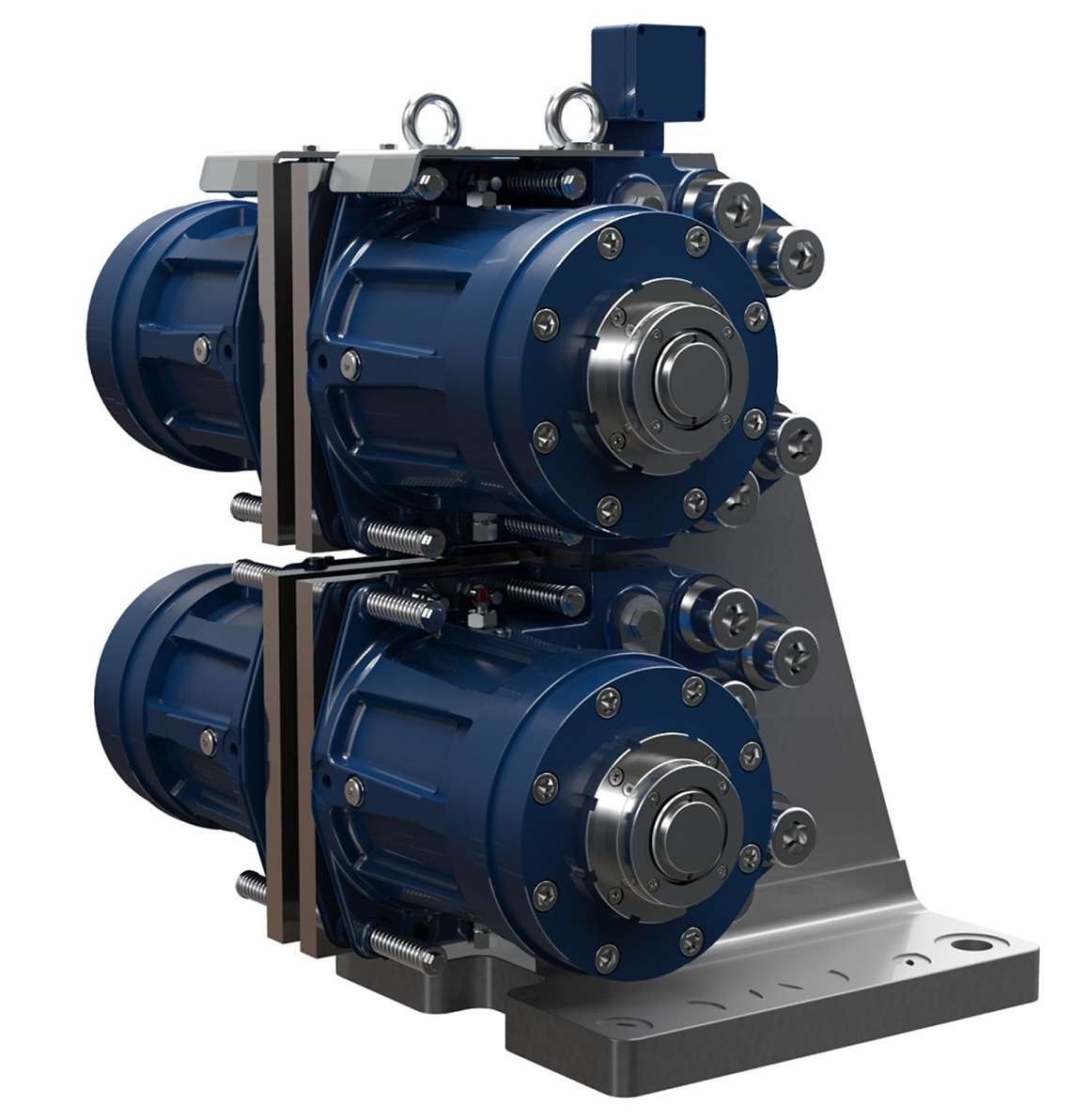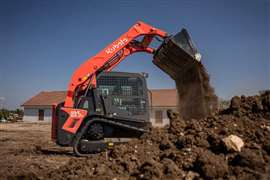Providing Even More Of A Brake
02 November 2017

BY BO SVENSSON
Dellner Brakes has introduced two new failsafe brakes into its SKP range. By combining power with modular, lightweight design at competitive prices, the systems target marine braking applications in oil rig draw works, cranes, winches, deck machinery and other equipment, both on and offshore.
Precision engineered in Sweden, the new spring applied SKP 180 brake weighs 315 kg and delivers braking forces of 141 to 226 kN through two brake housings, each containing a spring-applied piston. The SKP 4 x 180, at 630 kg, combines two brake assemblies containing a total of four pistons to deliver braking forces up to 453 kN.
Dellner has also developed an offshore version of the brake with corrosion protection and long-wearing paint and pistons that specially designed to withstand harsh conditions. The SKP’s new modular design also means that Dellner can provide larger systems — combining several brake assemblies or customized housings with several pistons — to deliver even more braking power, tailored specifically to customer needs.
“Innovation is at the heart of what we do here at Dellner and these new SKP brakes are no exception,” said Marcus Åberg, CEO, Dellner Brakes. “They have been developed in response to customer demand for a failsafe brake that’s lightweight and compact, but doesn’t compromise on strength or stopping power. We are confident that this revolutionary design will set new standards in the market.”
The brakes come with a range of optional extras including mounting brackets, double sealing kits and brake pads constructed from several different friction materials. Also included are indicators that show brake pad wear, whether the brake needs adjustment, micro and/or proximity switches and electrical control boxes.

The brakes incorporate cylindrical guide pins designed to transmit the tangential braking force from the brake lining to the brake housing and mounting stand. As a result, the brake pistons are not subject to any radial forces, which makes the brakes and the cylinder seals last much longer, the company said. As the brake lining wears, an extension of the brake piston through the adjustment nut indicates that adjustment is needed. The disc spring can be adjusted to compensate and maintain full brake capacity.
Late last year, Dellner Brakes launched what it called the world’s first fully automated electrical stopping, turning and locking (eSTL) system. The compact system needs no additional piping, making it quick, easy and cost-effective to install; especially where space is at a premium or where a clean environment is paramount, such as in green shipping zones, the company said.
Dellner Brakes’ standard range offers stopping torques up to 900 kNm, turning torques to 600 kNm and locking torques as high as 1650 kNm. The custom-built eSTL systems can be scaled up and adapted for specific applications.
“Yes, the system is available in a range of standard sizes, but it can also be customized for different applications,” said Åberg. “The unique, modular eSTL system allows customers to choose one, two or all three functions to create a bespoke solution for their needs. It is a technically advanced and precision-made braking system, which fully complements Dellner’s world beating hydraulic solutions.
“We have held initial discussions with our customers about this new electrical system and we are delighted with the response so far. Our customers tell us that eSTL will give them even more choice for small and mid-range applications.”
The Dellner eSTL system is fully automated, but can also be operated from an optional handheld remote control, allowing operators to inspect the complete system during maintenance and testing.
At “Stop,” a disc brake system stops the shaft quickly in any position. On “Turn,” after the brake has stopped the disc, an electric motor turns the disc and connects the shaft at a variable speed into an exact position for locking. At “Lock,” an electrically operated mechanical system pushes a specially designed tapered pawl into a machined slot on the brake disc, which locks and holds the brake disc and shaft, even in ship failure modes.
A continuous turning function means that the shaft can be moved to any position precisely without the need for indexing, making maintenance easier, Dellner said. The variable speed motor can also run continuously for hours, enabling checking and testing to take place over long periods. When in harbor, using the turning function to rotate the propeller can also help to reduce marine growth on the blades.

Recently, Dellner Brakes also completed its acquisition of USA brake and clutch company Gummi USA, helping expand its presence as a global supplier of brakes and related power transmission products for the industrial, marine and offshore markets.
The first acquisition in the company’s 50-year history, it enables Dellner Brakes to expand its product offering worldwide and strengthens the company’s distribution in North and South America.
“We are delighted to be joining forces with Gummi USA,” Åberg said. “They are a strong, established company who, like Dellner, are committed to producing high-quality, reliable products backed by strong customer service, which makes them the perfect partner for us.
“Gummi’s product range will complement this perfectly, allowing us to add high quality drum brakes, clutches, and couplings to our offering.”
The new company is operating under the Dellner brand with Åberg continuing at the helm as CEO. Gummi USA president Edgar Roca is serving as vice president for Dellner Brakes and managing director for the USA company, Dellner Industrial Inc.
Dellner Industrial will operate out of Gummi USA’s existing production and sales facilities in Charlotte, North Carolina and Houston, Texas.
POWER SOURCING GUIDE
The trusted reference and buyer’s guide for 83 years
The original “desktop search engine,” guiding nearly 10,000 users in more than 90 countries it is the primary reference for specifications and details on all the components that go into engine systems.
Visit Now
STAY CONNECTED




Receive the information you need when you need it through our world-leading magazines, newsletters and daily briefings.
CONNECT WITH THE TEAM












